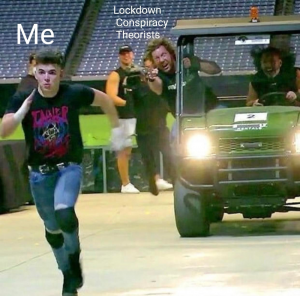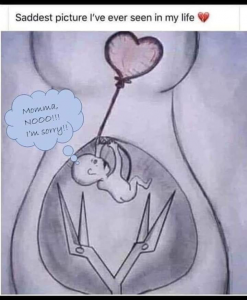I figure if I drop this in here, it will be of some use to someone 's life. In a nutshell, if you have ever wondered about who you are or where you are going with your life ( who hasn't) then reading up on ( Carl ) Jungian theory is for you . It pretty much forms the basis of all modern personality test like the Myer - Briggs. A lot of it works hand in hand with a lot these masonic / heremtic principle you guys have been posting. Me myself, as a left - handed male, I have that sensitive / creative side of myself that I can't escape and have learned to integrate into the male state - of - mind just by gaining awareness through knowledge.
link: for your convenience
http://www.sofia.edu/content/transpersonal-pioneers-carl-jung
Carl Jung is one of the most important, most complex, and most controversial psychological theorists. Jungian psychology focuses on establishing and fostering the relationship between conscious and unconscious processes. Dialogue between the conscious and the unconscious aspects of the psyche enriches the person, and Jung believed that without this dialogue, unconscious processes can weaken and even jeopardize the personality.
One of Jung's central concepts is individuation, his term for a process of personal development that involves establishing a connection between the ego and the self. The ego is the center of consciousness; the self is the center of the total psyche, including both the conscious and the unconscious. For Jung, there is constant interplay between the two. They are not separate but are two aspects of a single system. Individuation is the process of developing wholeness by integrating all the various parts of the psyche.
Jung's analysis of human nature includes investigations of Eastern and Western religions, alchemy, parapsychology, and mythology. His initial impact was greater on philosophers, folklorists, and writers than on psychologists or psychiatrists. Today, however, growing concern with human consciousness and human potential has caused a resurgence of interest in Jung's ideas.
[h2]The Attitudes: Introversion and Extraversion[/h2]
Among all of Jung's concepts, introversion and extraversion have probably gained the widest general use. Jung found that individuals can be characterized as either primarily inward-oriented or primarily outward-oriented. The introvert is more comfortable with the inner world of thoughts and feelings. The extravert feels more at home with the world of objects and other people.
No one is a pure introvert or a pure extravert. Jung compared the two processes to the heartbeat-there is a rhythmic alternation between the cycle of contraction (introversion) and the cycle of expansion (extraversion). However, each individual tends to favor one or the other attitude and operates more often in terms of the favored attitude. Introverts see the world in terms of how it affects them, and extroverts are more concerned with their impact upon the world.
There is also a balance between conscious and unconscious emphases on these qualities:
If you take an extravert you will find his unconscious has an introverted quality, because all the extraverted qualities are played out in his consciousness and the introverted are left in the unconscious. (Jung in McGuire & Hull, 1977, p. 342)
At times, introversion is more appropriate; at other times extraversion is more suitable. The two are mutually exclusive; you cannot hold both an introverted and an extraverted attitude concurrently. Neither one is better than the other. The ideal is to be flexible and to adopt whichever attitude is more appropriate in a given situation-to operate in terms of a dynamic balance between the two and not develop a fixed, rigid way of responding to the world.
Introverts are interested primarily in their own thoughts and feelings, in their inner world; they tend to be introspective. One danger for such people is that as they become immersed in their inner world, they may lose touch with the world around them. The absent-minded professor is a clear, if stereotypical, example.
Extroverts are actively involved in the world of people and things; they tend to be more social and more aware of what is going on around them. They need to guard against becoming dominated by external events and alienated from their inner selves. The hard-driving business executive who has no understanding of feelings or relationships is a classic stereotype of unbalanced extraversion.
[h2]The Functions: Thinking, Feeling, Sensation, Intuition[/h2]
One of Jung's greatest contributions to psychology is his theory of type. Jung found that different people think, feel, and experience the world in fundamentally different ways. His type theory is a powerful tool to help us understand how people function.
Jung identified four fundamental psychological functions: thinking, feeling, sensation, and intuition. Each function may be experienced in an introverted or an extraverted fashion. Generally, one of the functions is more conscious, developed, and dominant. Jung called this the superior function. It operates out of the dominant attitude (either extraversion or introversion). One of the other three remaining functions is generally deep in the unconscious and less developed. Jung called this the inferior function.
Thinking and feeling are alternative ways of forming judgments and making decisions.
Thinking is concerned with objective truth, judgment, and impersonal analysis. Thinking asks the question "What does this mean?" Consistency and abstract principles are highly valued. Thinking types (those individuals in whom the thinking function predominates) are the greatest planners; however, they tend to hold on to their plans and abstract theories even when confronted by new and contradictory evidence.
Feeling is focused on value. It may include judgments of good vs. bad and right vs. wrong (as opposed to decision making according to the criteria of logic or efficiency, as in thinking). Feeling asks the question "What value does this have?"
Jung classified sensation and intuition together as ways of gathering information, as distinct from ways of making decisions. Sensation refers to a focus on direct sense experience, perception of details, and concrete facts: what one can see, touch, and smell. Tangible, immediate experience is given priority over discussion or analysis of experience. Sensation asks the question "What exactly am I perceiving?" Sensing types tend to respond to the immediate situation and deal effectively and efficiently with all sorts of crises and emergencies. They generally work better with tools and materials than do any of the other types.
Intuition is a way of comprehending perceptions in terms of possibilities, past experience, future goals, and unconscious processes Intuition asks the question "What might happen, what is possible?" The implications of experience are more important to intuitives than the actual experience itself. Strongly intuitive people add meaning to their perceptions so rapidly that they often cannot separate their interpretations from the raw sensory data. Intuitives integrate new information quickly, automatically relating past experience and relevant information to immediate experience. Because it often includeds unconscious material, intuitive thinking appears to proceed by leaps and bounds.
Jung has called the least-developed function in each individual the inferior function. It is the least conscious and the most primitive, or undifferentiated. For some people it can represent a seemingly demonic influence because they have so little understanding of or control over it. For example, strongly intuitive types, who are not in touch with their sensation function, may experience sexual impulses as mysterious or even dangerous. Since it is less consciously developed, the inferior function may also serve as a way into the unconscious. Jung has said that it is through our inferior function that which is least developed in us, that we see God. By struggling with and confronting inner obstacles, we can come closer to the Divine.
For the individual, a combination of all four functions results in a well-rounded approach to the world:
In order to orient ourselves, we must have a function which ascertains that something is there (sensation); a second function which establishes what is (thinking); a third function which states whether it suits us or not, whether we wish to accept it or not (feeling); and a fourth function which indicates where it came from and where it is going (intuition). (Jung, 1942, p. 167)
Unfortunately, no one develops all four functions equally well. Each individual has one dominant function and one partially developed auxiliary function. The other two functions are generally unconscious and operate with considerably less effectiveness. The more developed and conscious the dominant auxiliary functions, the more deeply unconscious are their opposites.
One's function type indicates the relative strengths and weaknesses and the style of activity one tends to prefer. Jung's typology is especially useful in helping us understand social relationships; it describes how people perceive in alternate ways and use different criteria in acting and making judgments. For example, intuitive-feeling speakers will not have the same logical, tightly organized, and detailed lecture style as thinking-sensation lecturers. The talks of the former are more likely to ramble, to include stories, and to give the sense of a subject by approaching it from many different angles, rather than by developing it systematically.
[h2]The Unconscious[/h2]
Jung emphasizes that, because of its very nature, the unconscious cannot be known and thus must be described in relationship to consciousness. Consciousness, he believes, theoretically has no limit. Further, Jung divides the unconscious into the personal unconscious and the collective unconscious.
[h3]Personal Unconscious[/h3]
The material in the
personal unconscious comes from the individual's past. This formulation corresponds to Freud's concept of the unconscious. The personal unconscious is composed of memories that are painful and have been repressed, as well as memories that are unimportant and have simply been dropped from conscious awareness. The personal unconscious also holds parts of the personality that have never come to consciousness.
[h3]Collective Unconscious[/h3]
The
collective unconscious is Jung's boldest and most controversial concept. Jung identifies the collective, or transpersonal, unconscious as the center of all psychic material that does not come from personal experience. Its contents and images appear to be shared with people of all time periods and all cultures. Some psychologists, such as Skinner, implicitly assume that each individual is born as a blank slate, a tabula rasa; consequently, psychological development can come only from personal experience. Jung postulates that the mind of the infant already possesses a structure that molds and channels all further development and interaction with the environment. This basic structure is essentially the same in all infants. Although we develop differently and become unique individuals, the collective unconscious is common to all people and is therefore one (Jung, 1951a).
Jung's approach to the Collective unconscious can be seen in the following passage from a letter to one of his patients:
You trust your unconscious as if it were a loving father. But it is nature and cannot be made use of as if it were a reliable human being. it is inhuman and it needs the human mind to function usefully for man's purposes.... It always seeks its collective purposes and never your individual destiny. Your destiny is the result of the collaboration between the conscious and the unconscious. (Jung, 1973, p. 283)
We are born with a psychological heritage as well as a biological heritage, according to Jung. Both are important determinants of behavior and experience: "just as the human body represents a whole museum of organs, each with a long evolutionary period behind it, so we should expect to find that the mind is organized in a similar way. It can no more be a product without history than is the body in which it exists" (1964, p. 67).
The collective unconscious, which results from experiences that are common to all people, also includes material from our prehuman and animal ancestry. It is the source of our most powerful ideas and experiences.
[h2]Archetype[/h2]
The
archetype is probably Jung's most difficult concept. Archetypes are inherited predispositions to respond to the world in certain ways. They are primordial images, representations of the instinctual energies of the collective unconscious.
Jung postulated the idea of archetypes from the experiences his patients reported. A number of Jung's patients described dreams and fantasies that included remarkable ideas and images whose content could not be traced to the individual's past experience. Jung suggested that there is a level of imagery in the unconscious common to everyone. Jung also discovered a close correspondence between patients' dream contents and the mythical and religious themes found in many widely scattered cultures.
According to Jung, the archetypes are structure-forming elements within the unconscious. These elements give rise to the archetypal images that dominate both individual fantasy life and the mythologies of an entire culture. The archetypes exhibit "a kind of readiness to produce over and over again the same or similar mythical ideas" (1917, p. 69). They tend to appear as certain patterns-as recurring situations and figures. Archetypal situations include the hero's quest, the night-sea journey, and the battle for deliverance from the mother. Archetypal figures include the divine child, the double, the old sage, and the primordial mother.
Each of the major structures of the personality is also an archetype. These structures include the
ego, the persona, the shadow, the anima (in men),
the animus (in women), and
the self.
The archetypes themselves are forms, without content of their own, that serve to organize or channel psychological material. They are somewhat like dry stream beds whose shape determines the characteristics of a river once water begins flowing through them. The archetypes are carriers of energy. When an archetype is activated, it generally unlocks a tremendous amount of energy. All creativity has an archetypal element.
In his Hero with a Thousand Faces ( 1949), Joseph Campbell, a Jungian scholar, outlines the basic archetypal themes and patterns in the stories and legends of heroes found in cultures throughout history. Several excellent studies have articulated aspects of the heroic archetype into orphan, warrior, sage, fool (Pearson, 1989, 1991) and also into king, warrior, magician, and lover (Moore & Gillette, 1990). The story of Oedipus is a good illustration of an archetypal situation that deals with a son's deep love for his mother and conflict with his father. The same basic structure can be found as a theme in many myths and legends and also as a psychological pattern in many individuals. There are numerous other related situations, such as a daughter's relationship to her parents, parents' relationship to children, relationships between men and women, brothers and sisters, and so forth.
It is important to remember that only the contents of an archetype can enter consciousness. The archetype itself is a pattern that channels our psychic energies. We can never become fully conscious of this underlying pattern, just as we can study thousands of snowflake crystals but can never actually see the underlying pattern that generates their common crystalline structure.
[h2]The Ego[/h2]
The ego is the center of consciousness and one of the major archetypes of the personality. The ego provides a sense of consistency and direction in our conscious lives. It tends to oppose whatever might threaten this fragile consistency of consciousness and tries to convince us that we must always consciously plan and analyze our experiences.
According to Jung, the psyche at first consists only of the unconscious. Similar to Freud's view, Jung's ego arises from the unconscious and brings together various experiences and memories, developing the division between unconscious and conscious. There are no unconscious elements in the ego, only conscious contents derived from personal experience. We are led to believe that the ego is the central element of the psyche, and we come to ignore the other half of the psyche, the unconscious.
[h2]The Persona[/h2]
Our
persona is the appearance we present to the world. It is the character we assume-through it, we relate to others. The persona includes our social roles, the kind of clothes we choose to wear, and our individual styles of expressing ourselves. The term persona comes from the Latin, meaning "mask," or "false face," as in the mask worn by an actor on the Roman stage through which he spoke. In order to function socially at all, we have to play a part in ways that define our roles. Even those who reject such adaptive devices invariably employ other roles, roles that represent rejection.
The persona has both negative and positive aspects. A dominant persona can smother the individual, and those who identify with their persona tend to see themselves only in terms of their superficial social roles and facades. In fact, Jung called the persona the "conformity archetype." As part of its positive function, it protects the ego and the psyche from the varied social forces and attitudes that impinge on them. The persona is, in addition, a valuable tool for communication. In Roman drama the actors' boldly drawn masks informed the entire audience clearly, if somewhat stereotypically, of the personality and attitudes of the role each actor was playing. The persona can often be crucial to our positive development. As we begin to play a certain role, our ego gradually comes to identify with it. This process is central to personality development.
This process is not always positive, however. As the ego identifies with the persona, people start to believe that they are what they pretend to be. According to Jung, we eventually have to withdraw this identification and learn who we are in the process of individuation. Minority group members and other social outsiders in particular are likely to have problems with their identities because of cultural prejudice and social rejection of their personas (Hopcke, 1995).
[h2]The Shadow[/h2]
The
shadow is an archetypal form that serves as the focus for material that has been repressed from consciousness; its contents include those tendencies desires and memories that are rejected by the individual as incompatible with the persona and contrary to social standards and ideals. The shadow contains all the negative tendencies the individual wishes to deny, including our animal instincts, as well as undeveloped positive and negative qualities.
The stronger our persona is and the more we identify with it, the more we deny other parts of ourselves. The shadow represents what we consider to be inferior in our personality and also that which we have neglected and never developed in ourselves. In dreams, a shadow figure may appear as an animal, a dwarf, a vagrant, or any other low-status figure.
The shadow is most dangerous when unrecognized. Then the individual tends to project his or her unwanted qualities onto others or to become dominated by the shadow without realizing it. Images of evil, the devil and the concept of original sin are all aspects of the shadow archetype. The more the shadow material is made conscious, the less it can dominate. But the shadow is an integral part of our nature, and it can never be simply eliminated. A person who claims to be without a shadow is not a complete individual but a two-dimensional caricature, denying the mixture of good and evil that is necessarily present in all of us.
The following passage from one of Jung's letters provides a clear illustration of Jung's concept of the shadow and of the unconscious in general:
It is a very difficult and important question, what you call the technique of dealing with the shadow. There is, as a matter of fact, no technique at all, inasmuch as technique means that there is a known and perhaps even prescribable way to deal with a certain difficulty, or task. It is rather a dealing comparable to diplomacy or statesmanship. There is, for instance, no particular technique that would help us to reconcile two political parties opposing each other.... If one can speak of a technique at all, it consists solely in an attitude. First of all, one has to accept and to take seriously into account the existence of the shadow. Secondly, it is necessary to be informed about its qualities and intentions. Thirdly, long and difficult negotiations will be unavoidable....
Nobody can know what the final outcome of such negotiations will be. One only knows that through careful collaboration the problem itself becomes changed. Very often certain apparently impossible intentions of the shadow are mere threats due to unwillingness on the part of the ego to enter upon a serious consideration of the shadow. Such threats diminish usually when one meets them seriously. (1973,p.234)
Just when we think we understand it, the shadow will appear in another form. Dealing with the shadow is a lifelong process of looking within and honestly reflecting on what we see there (von Franz, 1995).
[h2]Anima and Animus[/h2]
Jung postulated an unconscious structure that is the complement of the
persona-the anima in man and the
animus in woman. This basic psychic structure serves as a focus for all the psychological material that does not fit with an individual's conscious self-image as a man or as a woman. Thus to the extent that a woman consciously defines herself in feminine terms, her animus will include those unrecognized tendencies and experiences that she has defined as masculine.
For a woman the process of psychological development entails entering into a dialogue between her ego and her animus. The animus may be pathologically dominated by identification with archetypal images (for example, the bewitched prince, the romantic poet, the ghostly lover, or the marauding pirate) and/or by an extreme father fixation.
The animus or anima initially seems to be a wholly separate personality. As the animus/anima and its influence on the individual is recognized, it assumes the role of liaison between conscious and unconscious until it gradually becomes integrated into the self. Jung views the quality of this union of opposites (in this case, masculine and feminine) as the major step in individuation.
As long as our anima or animus is unconscious, not accepted as part of our self, we will tend to project it outward onto people of the opposite sex:
Every man carries within him the eternal image of woman, not the image of this or that particular woman, but a definitive feminine image. This image is ... all imprint or "archetype" of all the ancestral experiences of the female, a deposit, as it were, of all the impressions ever made by woman.... Since this image is unconscious, it is always unconsciously projected upon the person of the beloved, and is one of the chief reasons for passionate attraction or aversion. (Jung, 1931b, P.19

According to Jung, the child's opposite-sex parent is a major influence on the development of the anima or animus. All relations with the opposite sex, including parents, are strongly affected by the projection of anima or animus fantasies. This archetype is one of the most influential regulators of behavior. It appears in dreams and fantasies as figures of the opposite sex, and it functions as the primary mediator between unconscious and conscious processes. It is oriented primarily toward inner processes, just as the persona is oriented to the outer. (For example, the creative influence of the anima can be seen in male artists who have traditionally attributed their inspiration to the muses--female demigoddesses.) Jung also called this archetype the "soul image." Because it has the capacity to bring us in touch with our unconscious forces, it is often the key to unlocking our creativity.
[h2]The Self[/h2]
The self is the most important personality archetype and also the most difficult to understand. Jung has called the self the central archetype, the archetype of psychological order and the totality of the personality. The self is the archetype of centeredness. It is the union of the conscious and the unconscious that embodies the harmony and balance of the various opposing elements of the psyche. The self directs the functioning of the whole psyche in an integrated way. According to Jung, "[C]onscious and unconscious are not necessarily in opposition to one another, but complement one another to form a totality, which is the self" (1928b, p. 175). Jung discovered the self archetype only after his investigations of the other structures of the personality.
The self is depicted in dreams or images impersonally (as a circle, mandala, crystal, or stone) or personally (as a royal couple, a divine child, or some other symbol of divinity). Great spiritual teachers, such as Christ, Muhammed, and Buddha, are also symbols for the self. These are all symbols of wholeness, unification, reconciliation of polarities, and dynamic equilibrium--the goals of the individuation process (Edinger, 1996). Jung explains the function of the self:
The ego receives the light from the Self. Though we know of this Self, yet it is not known.... Although we receive the light of consciousness from the Self and although we know it to be the source of our illumination, we do not know whether it possesses anything we would call consciousness.... If the Self could be wholly experienced, it would be a limited experience, whereas in reality its experience is unlimited and endless.... If I were one with the Self I would have knowledge of everything, I would speak Sanskrit, read cuneiform script, know the events that took place in pre-history be acquainted with the life of other planets, etc. ( 1975, pp.194-195)
The self is a deep, inner, guiding factor, which can seem to be quite different, even alien, from the ego and consciousness. "The self is not only the centre, but also the whole circumference which embraces both conscious and unconscious; it is the centre of this totality, just as the ego is the centre of consciousness" (1936b, p. 41). It may first appear in dreams as a tiny, insignificant image, because the self is so unfamiliar mid undeveloped in most people. The development of the self does not mean that the ego is dissolved. The ego remains the center of consciousness, an important structure within the psyche. It becomes linked to the self as the result of the long, hard work of understanding and accepting unconscious processes.
[h2]Symbols[/h2]
According to Jung, the unconscious expresses itself primarily through symbols. Although no specific symbol or image can ever fully represent an archetype (which is a form without specific content), the more closely a symbol conforms to the unconscious material organized around an archetype, the more it evokes a strong, emotionally charged response.
The symbol has a very complex meaning because it defies reason; it always presupposes a lot of meanings that can't be comprehended ill a single logical concept. The symbol has a future. The past does not suffice to interpret it, because germs of the future are included in every actual situation That's why, in elucidating a case, the symbolism is spontaneously applicable for it contains the future (Jung in McGuire & Hull 1977, p. 143)
Jung is concerned with two kinds of symbols: individual and collective. By individual symbols Jung means "natural" symbols that are spontaneous productions of the individual psyche, rather than images or designs created deliberately by an artist. In addition to the personal symbols found in an individual's dreams or fantasies, there are important collective symbols, which are often religious images such as the cross, the six-pointed Star of David, and the Buddhist wheel of life.
Symbolic terms and images represent concepts that we cannot completely define or fully comprehend. Symbols always have connotations that are unclear or hidden from LIS. For Jung, a sign stands for something else, but a symbol, such as a tree, is something in itself-a dynamic, living thing. A symbol may represent the individual's psychic situation, and it is that situation at a given moment.
[h3]Active Imagination[/h3]
Jung valued the use of active imagination as a means of facilitating self-understanding through work with symbols. He encouraged his patients to paint, sculpt, or employ some other art form as a way to explore their inner depths. Active imagination is not passive fantasy but an attempt to engage the unconscious in a dialogue with the ego, through symbols.
Active imagination refers to any conscious effort to produce material directly related to unconscious processes, to relax our usual ego controls without allowing the Unconscious to take over completely. The process of active imagination differs for each individual. Sonic People use drawing or painting most profitably, whereas others prefer to use conscious imagery, or fantasy, or some other form of expression.
Jung himself used a variety of outlets to explore his unconscious. He designed his retreat house in Bollingen according to his inner needs, and, as he himself developed, he added wings to the house. Jung also painted murals on the walls at Bollingen; he inscribed manuscripts in Latin and high German script, illustrated his own manuscripts, and carved in stone.
Dreams. For Jung, dreams play an important complementary (or compensatory) role in the psyche. The widely varied influences we are exposed to in our conscious life tend to distract us and to mold our thinking in ways that are often unsuitable to Our personality and individuality. "The general function of dreams," Jung wrote, "is to try to restore our psychological balance by producing dream material that re-establishes, in a subtle way, the total psychic equilibrium." (1964, p. 50).
Jung approached dreams as living realities that must be experienced and observed carefully to be understood. He tried to uncover the significance of dream symbols by paying close attention to the form and content of the dream, and he gradually moved away from the psychoanalytic reliance on free association in dream analysis. "Free association will bring out all my complexes, but hardly ever the meaning of a dream. To understand the dream's meaning I must stick as close as possible to the dream images" ( 1934, 1). 149). In analysis, Jung would continually bring his patients back to the dream images and ask them, "What does the dream say?" (1964, p. 29).
Because the dream deals with symbols that have more than one meaning, there can be no simple, mechanical system for dream interpretation. Any attempt at dream analysis must take into account the attitudes, experiences, and background of the dreamer. It is a joint venture between analyst and analyzed. The dreamer interprets the dream with the help and guidance of the analyst. The analyst may be vitally helpful, but in the end only the dreamer can know what the dream means.
Jeremy Taylor, a well-known authority on Jungian dreamwork Postulates certain basic assumptions about dreams (1992, p. I I ):
- All dreams come in the service of health and wholeness.
- No dream comes simply to tell the dreamer what he or she already knows.
- Only the dreamer can say with certainty what meanings a dream may hold.
- There is no such thing as a dream with only one meaning
- All dreams speak a universal language, a language of metaphor and symbol.
More important than the cognitive understanding of dreams is the act of experiencing the dream material and taking this material seriously. Jung encourages us to befriend our dreams and to treat them not as isolated events but as communications from the unconscious. This process creates a dialogue between conscious and unconscious and is, an important step in the integration of the two (Singer, 1972, p. 283).
[h2]Psychological Growth: Individuation[/h2]
According to Jung, every individual naturally seeks individuation or self-development. Jung believed that the psyche has an innate urge toward wholeness. This idea is similar to Maslow's concept of self-actualization but it is based on a more complex theory of the psyche than Maslow's. "Individuation means becoming a single, homogeneous being, and, insofar as 'individuality' embraces our innermost, last, and incomparable uniqueness, it also implies becoming one's own self we could therefore translate individuation as 'coming to selfhood' or 'self-realization' " (Jung, 1928b, p. 171).
Individuation is a natural, organic process. It is the unfolding of our basic nature, and is a fundamental drive in each of us. As Jung has written, "it is what makes a tree turn into a tree" (in McGuire & Hull, 1977, p. 210).
[h2]Evaluation[/h2]
Jung has often been criticized for his lack of a coherent, clearly structured system of thought. His writing sometimes seems to go off on tangents, rather than present ideas in a formal, logical, or even systematic fashion. Also, at different times Jung may use varying definitions for the same term. He was aware of this difficulty in his writing but did not see it as a drawback. Jung believed that life rarely follows the logical, coherent pattern that has become the standard for scientific and academic writing, and felt that his own style may be closer to the rich complexity of psychological reality.
Jung deliberately developed a loose, open system, one that could admit new information without distorting it to fit a closed theoretical framework. He never believed that he knew all the answers or that new information would merely confirm his theories. Consequently his theorizing lacks a tight, logical structure that categorizes all life in terms of a small number of theoretical constructs.
It has been argued that Jung's work is still extremely relevant today and that his writings are in line with the postmodern critiques of contemporary culture (Hauke, 2000). Also, Jung's no obj





































